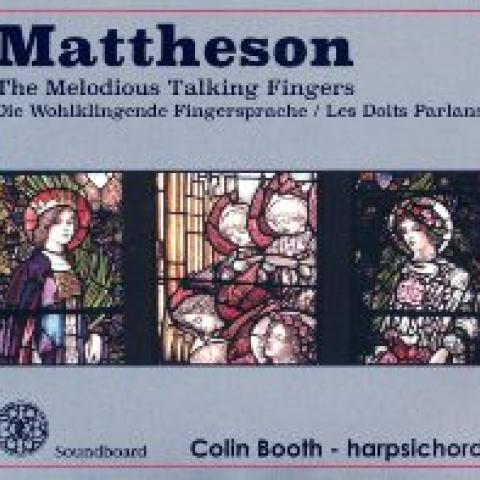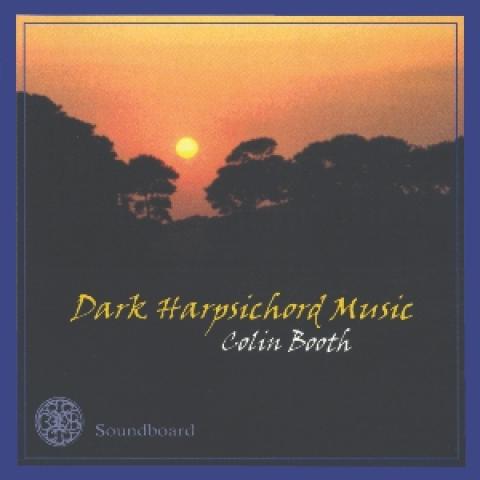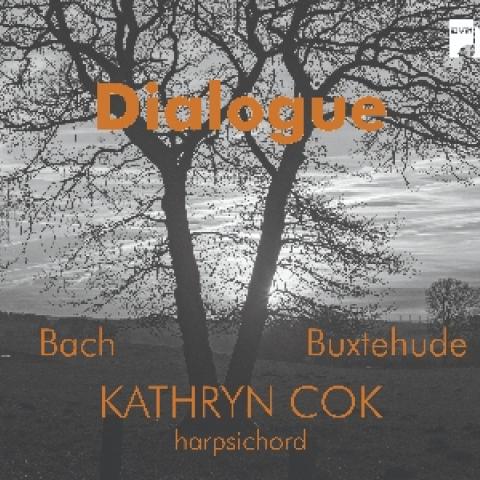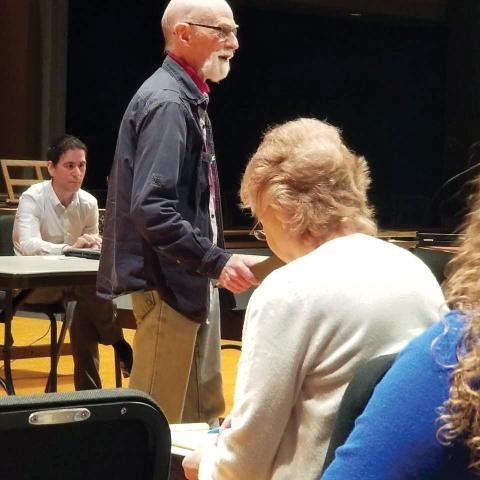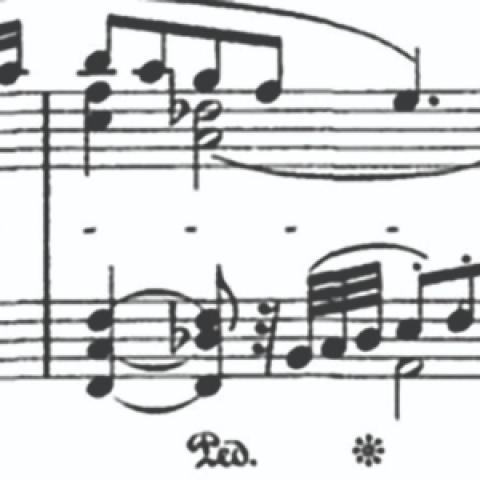Equally at home with historical keyboards and the piano, Michael Delfín is a top prizewinner of the Jurow International Harpsichord Competition and is a member of The Diapason’s 20 Under 30 Class of 2021. Based in Cincinnati, Ohio, he is artistic director of Seven Hills Baroque. For information: michaeldelfin.com.
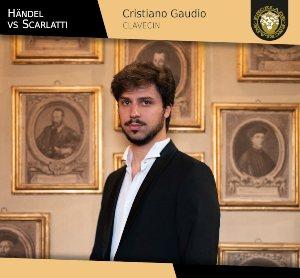
Foes find friendship: Händel vs. Scarlatti
Händel vs. Scarlatti, Cristiano Gaudio, harpsichord. L’Encelade, ECL 2003. Available from encelade.net.
Georg Friederich Händel: “Toccata I in G Major,” “Toccata VI in C Major,” “Toccata IX in G Minor,” and “Toccata XI in D Minor” from the Bergamo Manuscript; Sonata in G Minor, HWV 580; Suite II in F Major, HWV 427; Chaconne in G Major, HWV 435; transcription of Violin Sonata No. 10 in A Major, HWV 372. Domenico Scarlatti: Sonata in F Major, K. 82; Sonata in F Minor, K. 69; Sonata in D Minor, K. 32; Sonata in D Minor, K. 64; Sonata in G Minor, K. 43; Sonata in D Major, K. 33; Sonata in D Major, K. 53; Sonata in C Major, K. 86; Sonata in C Minor, K. 84; Sonata in C Minor, K.58.
Competition very often follows musicians throughout their lives, sometimes in healthy ways and sometimes not, and competitive events often yield memorable outcomes. The Saxon Georg Friederich Händel and the Italian Domenico Scarlatti first met in 1708, and at the instigation of the patron of the arts Cardinal Pietro Ottoboni in Rome, the two engaged in a musical duel for an audience drawn from the nobility. Rather than speak critically of each other as Mozart did of Clementi, flee town in fear as Louis Marchand did with Johann Sebastian Bach, or storm out of the city as Daniel Steibelt did after losing to Ludwig van Beethoven, Händel and Scarlatti became friends and admirers of each other’s skill. Händel was declared the superior organist, while Scarlatti was deemed the superior harpsichordist.
Händel (who later Anglicized his name to George Frideric Handel) settled in England and composed in as many genres as he encountered on his travels, while Scarlatti settled in Iberia, eventually marrying into the Spanish royalty and composing over 550 keyboard sonatas, among other works. Although the musical program of this duel has been lost to history, harpsichordist Cristiano Gaudio captures the spirit of two twenty-four-year-old virtuosos vying for the public eye in an impressive and brilliantly played album entitled Händel vs. Scarlatti.
As we know from their careers, Händel and Scarlatti could not be more different as people and composers, but this album pits them together on the level playing field of the harpsichord. Both were lauded for their virtuosity, and both were highly skilled in the art of improvisation at the keyboard, and Gaudio’s album highlights both traits. His program selections stem from Händel’s younger years and most likely Scarlatti’s as well (as best as the Kirkpatrick numbers may yield). The variety of styles places the listener in the front row of the audience, hearing the two young composers show off their skill and challenge each other to more and more daring feats at the keyboard.
Händel starts the first round with a stirring toccata preserved in the newly discovered “Bergamo” manuscript. Händel’s toccatas in this album showcase his brilliant improvisations as an organist, and as this opening selection resembles the more sectional, improvisatory sonata movements of Corelli, perhaps the German Händel is showing his skill at a more Italian vein to impress his hosts. However, Scarlatti takes the Saxon to task and plays a fugue at a presto tempo, showing his mastery of a more German learned style! (Gaudio’s super-charged performance is especially breathtaking.) He then demonstrates a more sensitive, suave approach to the harpsichord that would highlight his slower sonatas to come. In Gaudio’s hands, this Bruce Kennedy Italian harpsichord sings sensuously, and Scarlatti’s Spanish flair enticingly emerges.
Back and forth the composers square off, with Gaudio refereeing the musical melee. Händel takes a turn at fugal style while Scarlatti pares back his fingerwork for a gentler approach. (Gaudio’s tasteful embellishments in the latter seem to emanate from within the sound of the instrument.) Händel produces multi-sectional toccatas, to which Scarlatti replies with paired sonatas. Händel then attempts a languid and suave sound through an organ sonata movement, but Scarlatti disrupts this aria with an allegrissimo in the same key. At this point the composers play off of each other, as Händel continues in G minor with another toccata, this time joined to a capriccio. Perhaps these mutual segues hint at the respect the two men gained for each other upon meeting each other in “battle.”
As the contest progresses, the virtuosi move more into their own worlds—Scarlatti into Spanish dance and keyboard pyrotechnics, and Händel into orchestral writing. K. 33 signals a Spanish jota, a vigorous dance in 3/8, but Scarlatti also takes time to improvise between phrases. Gaudio’s timing of these moments keeps the listener on edge as the movement seemingly halts, then precipitates into the dance once again. Although Scarlatti’s Spanish flavor would come later, its presence in this album makes his music contrast most spiritedly from Händel’s. K. 53 also signals guitar-like writing and more visually the hand-crossings that would make Scarlatti’s sonatas legendary across all keyboard instruments. Gaudio’s fiery virtuosity is so very enjoyable that one almost forgets the demands of this music!
Not to be outdone, Händel enters the fray again, this time with a gem from his first volume of suites. He steps away from the organ and becomes an orchestrator, perhaps attempting to outdo Scarlatti through his own use of the harpsichord’s sonority and register, which differs in each movement. Gaudio equally demonstrates the ability of the harpsichord to imitate orchestral voices in a concertante setting, both solo and grosso. The opening aria’s florid melodic line rivals that of the most beautiful aria-like sonatas that Scarlatti could write, and Gaudio captivates the listener from the very first note. Vigorous violin-like writing characterizes the second movement, which is similar in key and brilliance to the opening soprano aria of Partenope, an opera Händel would write in London some twenty years later. The shock of the third movement’s key paves the way for individual lines in a concerto grosso-like texture to permeate the aura created by this new solemn affect. Gaudio shapes each line elegantly and leaves the listener wondering what could happen next. The final ebullient fugue is a tour de force and features both Händel’s training in counterpoint and zest for flair at their best. Gaudio’s energy is relentlessly exciting, though one may wish at times for more articulated shape in each fugal line, not just pell-mell energy.
For the final stretch of performances, both composers offer their most personal craft. Scarlatti’s three sonatas treat the listener to memorable elegance, more fireworks, and one last demonstration of the learned style. Gaudio highlights the whimsical air of K. 86 with expressive elegance, shows off the brilliance of K. 84 with great freedom and edge, and holds together K. 58’s structure amid gnarly chromaticism. His freedom in timing sometimes detracts from the pieces’ architecture, but the elegance in K. 86 ensures that the listener is never lost in the weeds but is always at home in the flowers. Even though the sense of meter in K. 84 disappears in pauses and drastic tempo shifts, the listener is allowed a glimpse at the overtly brilliant keyboard writing that characterizes Scarlatti’s most difficult sonatas. In this sonata, Scarlatti snarls at his foe! He then continues one-upping Händel in a virtuosic, chromatic fugue, demonstrating both a command of the keyboard and the epitome of learned-style counterpoint, with a subject based entirely on the chromatic scale. Gaudio’s performance of K. 58 breathes more here than in Händel’s imitative writing, but one still might wish the fugue subject were crafted with a greater sensitivity to meter. However, even with occasionally blurred chromatic lines, the overall structure of the fugue is most convincing.
Händel’s wild last toccata and the great “Chaconne” cement his improvisatory prowess in the audience’s memory. Gaudio gives an elaborate and gripping performance of this incredible latter work, and his addictive energy holds the audience’s attention to the very end. His brilliant fingerwork at times relies more on speed and clarity than shape in the many running lines, but the rhythmic energy of the whole movement compels the listener’s attention and applause. Gaudio ends the album with a lovely encore in the form of a transcription from a violin sonata. One can imagine the two composers reading this movement together on separate instruments (or perhaps the same one!) before going their separate ways with newfound reverence at each other’s mastery.
So who carries the day? You be the judge, but Gaudio clearly gives a winning performance as the referee. The two instruments by Bruce Kennedy offer timbral variety, and one can imagine both composers taking turns at each instrument and even the same instrument. This brilliant album leaves the listener inspired, breathlessly excited, and eager for more, and Mr. Gaudio delivers the styles of the two giants with ease, taste, and exuberance.


